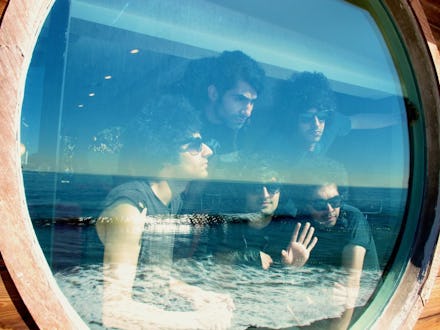What The Media Is Getting Wrong About The Iranian Rockers Murdered in Brooklyn

When Ali Akbar Mohammadi Rafie killed three musicians from the bands Yellow Dogs and Free Keys, then turned the gun on himself on November 11, the media mill went wild for the story. This particular tragedy had all the makings of a sexy scoop: blood and murder, rock n' roll, and the cherry on top — they were all Iranian.
"They fled the tyranny of Iran only to be executed by one of their own in New York City," the New York Post reported.
The Guardian's Paul Farrell, in an article titled, "The Yellow Dogs: the Dissident Rockers Who Made History in Tehran," described a band of rock n' roll deviants who made music against all odds. "They survived Iran," he wrote.
The media framed this story as the tragic loss of aspiring Iranian rockers who escaped oppression and persecution in an effort to pursue their dreams in a free society.
But there were two serious flaws with this narrative. Firstly, the notion that Iran is a tyrannical regime, that the only way to live in Iran is to survive it, as Farrell suggests, is blatantly false. Though there are rules in place that deny artists full freedom of expression, there is also a strong network of support for artists in Iran — galleries and private spaces that back artists and musicians while circumnavigating the rules of the regime. And in fact, there are thousands of musicians in Iran, not just performing underground, but also in public, and the art scene is not only present, but thriving.
In the case of the Yellow Dogs, though they were censured by the Iranian government and eventually sought asylum in 2009 in the United States, this was largely because of their appearance in Bahman Ghobadi's film, No One Knows About Persian Cats, which stirred controversy in Iran for its portrayal of this "underground art scene" and brought the Yellow Dogs onto the radar of the regime.
And conspicuously absent from these stories was perhaps the most crucial issue of all: the ineffectual laws that allowed Rafie, a non-U.S. citizen, to get his hands on a .308-caliber assault rifle in New York, a state where possession of such a weapon is prohibited.
Because this is not just an Iranian tragedy — this is an American one.
According to a New York Times report, the police were able to trace Rafie's Spanish-manufactured weapon as far as a gun shop in upstate New York that had closed five years before he even stepped foot in the U.S. in 2011. But that was it.
Since there is no national gun registry in the United States — no comprehensive digital database through which one might be able to trace the serial number of a weapon — there was no easy way to know how Rafie acquired the gun.
On Monday night, at a benefit concert for the Yellow Dogs held at Brooklyn Bowl, I ran into the critically acclaimed visual artist Shirin Neshat. An Iranian exile of over 30 years, she is also an active critic of the country in which she was born and raised, and which she eventually left.
Referring to the tragic events, she said, "This doesn't happen in Iran. This doesn't happen anywhere else. This kind of violence only happens in places that they don't have laws to control guns."
Neshat's statement was not far off the mark. According to Gunpolicy.org, in 2009 the number of homicides by any means (gun-related or otherwise) in Iran was 2,215, while the rate of homicide per 100,000 people was 3.0.
Compare this to the U.S., in which the number of deaths by firearm alone was 31,347 that year, while the rate of all gun deaths per 100,000 people was 10.22.
The Free Keys | Facebook
Last Friday, I sat in a café with a former member of the Free Keys, who preferred not to release his name. (For the purposes of this story, we'll call "Amoo joon," an affectionate Persian term for "uncle." Rafie used to call him that, he told me.)
Amoo joon was visibly shaken, which was not surprising: three of his close friends had just been killed, and the gunman was someone he knew, someone with whom he'd had a tense relationship.
With his phone in his hand, he scrolled through screenshots of Rafie's Facebook wall from the night before his murderous rampage. Amoo joon had taken these screen captures in the aftermath of the shootings.
First, there was a photo of an assault weapon that resembled the description of the weapon that Rafie had used to execute the men. The weapon was in its case, the ammunition neatly stowed in a small plastic bag.
And, amongst several posts Rafie had made was this comment: "Gharb zade shodam," the Persian transliteration for: "I've become Western."
Rafie's notion that to be "Western" is to be a gun-toting murderer is just as unoriginal and reductive as the media's depiction of Iran as a nation comprising oppressed people without any form of agency.
And no doubt, Rafie learned how to wield this particular weapon as a result of serving his two-year mandatory military service in Iran. But in the end, he didn't kill the young men in Iran. He killed them in America.